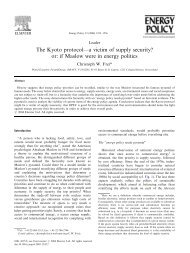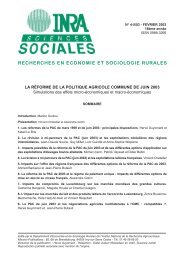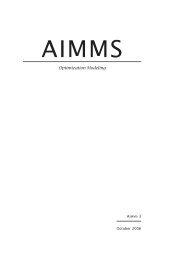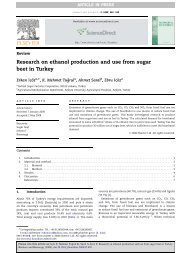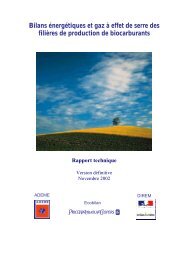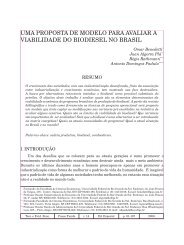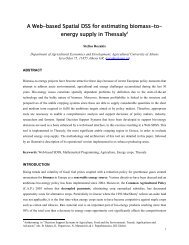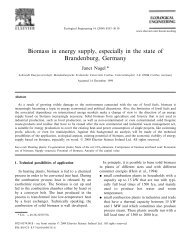Understanding entrepreneurial intentions of students in agriculture ...
Understanding entrepreneurial intentions of students in agriculture ...
Understanding entrepreneurial intentions of students in agriculture ...
You also want an ePaper? Increase the reach of your titles
YUMPU automatically turns print PDFs into web optimized ePapers that Google loves.
efer to emotional states def<strong>in</strong>ed by both positive and negative emotions (Williams and Aaker,2002). Although there still exists an <strong>in</strong>terest<strong>in</strong>g controversy <strong>in</strong> the literature on whether peoplecan experience positive and negative affect at the same time we have no reasons to believe thatthis will not also be true for anticipated affect <strong>in</strong> the context <strong>of</strong> entrepreneurship, anemotionally complex process.We exam<strong>in</strong>ed <strong>students</strong>’ anticipated affect when asked to imag<strong>in</strong>e nascententrepreneurship. Nascent entrepreneurs (i.e. <strong>in</strong>dividuals that are <strong>in</strong>volved <strong>in</strong> on-go<strong>in</strong>g but notyet operational bus<strong>in</strong>ess start-up efforts <strong>in</strong> which they are go<strong>in</strong>g to be owners) engage <strong>in</strong> a widevariety <strong>of</strong> gestation activities vastly vary<strong>in</strong>g <strong>in</strong> duration and <strong>in</strong> composition, that may grouped<strong>in</strong>to different categories <strong>of</strong> behavior. In this situation no money has been <strong>in</strong>vested, no <strong>in</strong>comehas been made and the bus<strong>in</strong>ess <strong>in</strong> not a legal entity (Carter, et al., 1996).3. OVERVIEW OF STUDY AIMSThe study aimed to <strong>in</strong>vestigate the extent to which, the TPB holds for agriculturaluniversity <strong>students</strong>. Furthermore, we <strong>in</strong>vestigated the relationship between the core variables <strong>of</strong>the TPB and anticipated affective ambivalence from nascent entrepreneurship.4. MATERIALS AND METHODSWe used a cross-sectional survey design and applied a structured questionnaire to collectdata. Survey data were collected from 65 <strong>students</strong> from the Agricultural University <strong>of</strong> Athens(AUA). These <strong>students</strong> participated <strong>in</strong> the entrepreneurship program organized by theInnovation & Entrepreneurship Unit <strong>of</strong> AUA. Surveys were adm<strong>in</strong>istrated to <strong>students</strong>’ class atthe beg<strong>in</strong>n<strong>in</strong>g <strong>of</strong> the programme (October 2012). In sum, the sample consisted <strong>of</strong> 29 male<strong>students</strong> (44.6%), the mean sample age was 24.11 years (SD = 2.61 years). Six participants(9.2%) were postgraduate <strong>students</strong>. Thirty three percent <strong>of</strong> the participants reported that one <strong>of</strong>their parents owned full time bus<strong>in</strong>ess most <strong>of</strong> the time, while they were grow<strong>in</strong>g up, almosteighty percent reported that they know an entrepreneur <strong>in</strong> their close environment. It isnoteworthy that various discipl<strong>in</strong>es <strong>of</strong> agricultural related sciences are represented <strong>in</strong> theparticipants, namely Crop Science (12 <strong>students</strong>), Biotechnology (9), Food Science (9),Agricultural Economics and Rural Development (31) and Animal Science (4).The questionnaire conta<strong>in</strong>ed constructs (i.e. variables) that were assessed with self-reportmeasures based on multi-item scales. Specifically, we assessed <strong>students</strong>’ <strong>entrepreneurial</strong> <strong>in</strong>tent(INT) us<strong>in</strong>g the scale orig<strong>in</strong>ally developed by Thompson (2009). Attitudes towards5



